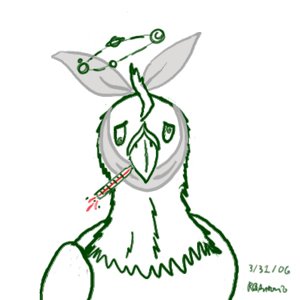Avian Flu---Time's A-Tickin'...Part 3
 On March 9, 2006, you may have seen the national news with reports that the Avian Flu will be brought to the US via the migratory bird paths. This has been the speculation for several months and the federal government has increased surveillance of the migratory birds to monitor for bird deaths and the presence of the H5N1 virus in live birds. The top UN health official speculates that the virus will reach the US in the next 6 to 12 months, but he cautions that his speculations have been in error before. It could be sooner-
On March 9, 2006, you may have seen the national news with reports that the Avian Flu will be brought to the US via the migratory bird paths. This has been the speculation for several months and the federal government has increased surveillance of the migratory birds to monitor for bird deaths and the presence of the H5N1 virus in live birds. The top UN health official speculates that the virus will reach the US in the next 6 to 12 months, but he cautions that his speculations have been in error before. It could be sooner-Scientists already had been watching for the strain in wild birds in Alaska and North American migratory flyways. But the effort is being dramatically stepped up this year.
Begin To Prepare
The Avian Flu virus will be food borne, air borne and spread by contact. What can you do now to prepare for each of these types of transmission?
Contact transmission:
Just as the seasonal flu is extremely easy to catch by breathing in droplets (created by coughing, sneezing, speaking, etc.), or by touching the droplets after they land on surfaces so will the avian-human flu. When you touch items such as furniture, doorknobs, hand rails, telephones, skin, clothes, soiled tissues, etc. and then touch your mouth, nose or eyes, you could be exposed to the virus. So, a primary prevention is WASHING YOUR HANDS. Don't touch your mouth, nose or eyes unless you have just washed your hands. Keep alcohol based hand sanitizer in your car, purse, backpack. You get the idea. Be able to wash your hands in any enviornment you find yourself.
Reduce possible airborne exposure: Avoid close contact with people who have the flu or show symptoms of respiratory illness. Avoid crowds and remain several feet away from individuals who are coughing. Wear procedure masks when in crowds or when caring for person with a cough or flu symptoms.
If you don't feel well, prevent others from getting ill by using strict respiratory etiquette: Individuals with a fever and respiratory symptoms should 1) cough or sneeze into a tissue, 2) dispose of soiled tissue and 3) immediately wash hands or use an alcohol-based hand sanitizer. To prevent the spread of potentially infectious aerosolized droplets, wear a mask when it is necessary to be near other people.
Food borne Prevention
Food preparation:
Poultry. There is no evidence that properly cooked poultry (170 F°; 77 C°) can be a source for infection. Eggs should be cooked thoroughly. However, it is very important to properly clean surfaces and wash hands after handling uncooked poultry and prior to preparing any food that will not be subsequently cooked to the target temperature. Fortunately, disinfection with most common disinfectants is very effective in killing the influenza virus. See the list under the section on Cleaning and Disinfection.
Pork. Avian flu has been isolated in infected pigs in other countries. It is not known at this time whether food preparation activities of infected pork can spread the infection. Because the heat required to cook pork adequately kills flu virus, there should be no possibility of the survival of infective influenza virus - avian or otherwise. The same attention to hand washing and surface cleaning applies to pork as it does to poultry, and should be followed in the preparation of any meat, fish or poultry products at any time regardless of the threat of infection.
Cleaning and surface disinfection:
* Detergents
* 70% alcohol
* Sodium hypochlorite: dilute household bleach, which is 5% hypochlorite, by adding 1 part bleach into 4 parts clean water.
Based on these recommendations, start your preparedness plan for home,
purchase:
* Bleach
* Alcohol based hand cleaner
* 70% alcohol
* Masks
* Extra facial tissue
Next: More family preparedness tips from the US Department of Health and Human Services







<< Home